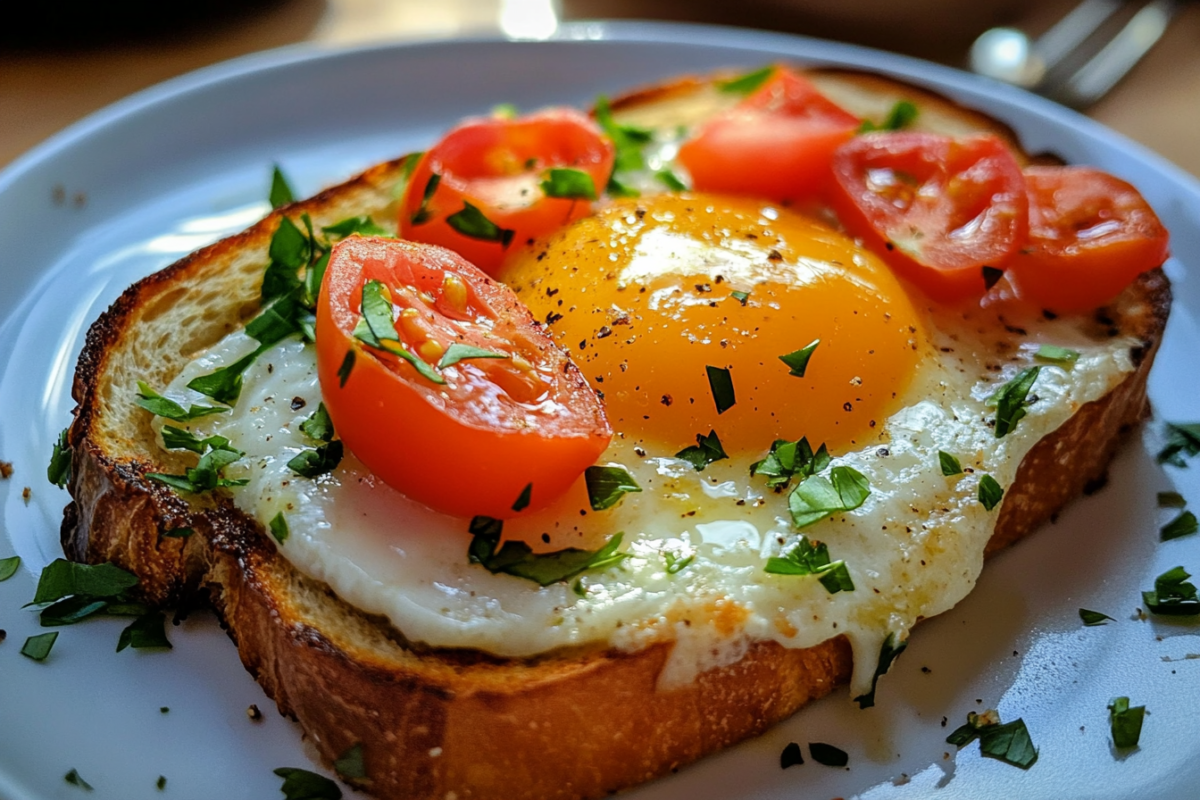How to toast a croissant perfectly is an art form, a skill that elevates this already delightful pastry to a new echelon of culinary pleasure. It’s about achieving that elusive, ideal equilibrium: a warm, yielding, impeccably flaky interior paired with an exterior that boasts a lustrous, golden-brown hue and a satisfyingly delicate crispness. The aroma alone, that intoxicating blend of butter and baked dough, is enough to transform an ordinary morning into a special occasion. But fear not, achieving this croissant perfection is well within your grasp! With a little practice, a dash of patience, and the right techniques, you’ll soon be enjoying expertly toasted croissants that are sure to impress. Let’s explore how to toast a croissant perfectly.
Croissant Toast – Discussing a specific variation of croissants that could be ideal for toasting.
Understanding the Art of Toasting Croissants: Why Mastering This Skill Matters
Toasting a croissant perfectly isn’t simply a matter of tossing it into a toaster and hoping for the best. It demands a nuanced understanding of the pastry’s delicate nature and the skillful application of methods that accentuate its inherent qualities. Proper toasting awakens the dormant buttery layers, unleashing an irresistible aroma and a texture that is nothing short of sublime. It takes a simple, unadorned croissant and transforms it into a truly unforgettable and deeply satisfying culinary experience. Mastering how to toast a croissant perfectly is therefore a worthwhile pursuit for any serious food enthusiast.
Why Toasting Matters: Enhancing Flavor and Texture
Why go to the trouble of toasting? Because toasting a croissant perfectly breathes new life into it, especially those that might be a day or two old. The gentle application of heat reanimates the butter, resulting in a richer, more complex flavor profile and a texture that is profoundly satisfying. Furthermore, it establishes a delightful contrast between the croissant’s pillowy soft interior and its exquisitely crispy exterior – a textural dance that tantalizes the taste buds. Knowing how to toast a croissant perfectly is a culinary trick every home cook should have up their sleeve. Beyond mere reanimation, toasting a croissant perfectly can revive its crispness and flakiness, making it as enjoyable as the day it was baked.
Factors Affecting Toasting: A Delicate Balance
Several factors come into play in determining the success or failure of toasting a croissant perfectly. The age and overall quality of the croissant itself are paramount. A stale croissant will undoubtedly behave differently than a freshly baked one. In addition, the type of appliance used – whether it’s a toaster, oven, or something else – along with the precise temperature setting and the duration of the toasting process, all exert a powerful influence on the final outcome. Therefore, a keen awareness of these variables and the willingness to adjust your approach accordingly are absolutely essential. Consider the croissant’s initial moisture content, its butter content (a high-butter croissant will toast differently), and even its size and shape. Understanding these aspects allows you to better learn how to toast a croissant perfectly. A denser croissant, for instance, may demand a longer toasting time than its lighter, airier counterpart. Learning how to toast a croissant perfectly also involves understanding these nuances.
7 Secret Methods for Perfect Croissant Toasting: Unlock the Secrets
Here are seven secret, time-tested methods to achieve the pinnacle of croissant toasting perfection. Each method offers its own unique set of advantages, catering to a diverse array of preferences and varying levels of available equipment. Ultimately, discovering your personal, go-to method for how to toast a croissant perfectly is part of the joy of the journey! Experiment, make adjustments, and allow yourself the freedom to explore until you’ve identified the technique that consistently delivers the results that most delight your palate. Don’t hesitate to try different approaches, fine-tune your process, and develop an intuitive sense for achieving consistently perfect croissants, toasted precisely to your individual specifications. With these methods, you can learn how to toast a croissant perfectly no matter the kitchen setup.
1. The Classic Toaster Method: Simplicity and Speed
The classic toaster, a kitchen staple, offers a supremely convenient option for toasting croissants. However, achieving excellence with this method requires a touch of finesse. It’s all about patiently finding that “sweet spot” – the precise setting that yields golden-brown perfection without venturing into burnt territory. As a general guideline, a lower setting tends to be preferable, minimizing the risk of unwanted charring. The optimal setting will be dictated by your toaster’s specific power output and the unique characteristics of the croissant itself. Always maintain a vigilant watch over the croissant as it toasts, intervening quickly to prevent any accidental mishaps. Learning how to toast a croissant perfectly in a toaster requires practice. Burnt croissants are a common pitfall for beginners, so unwavering attention is crucial in your quest to achieve that ideal golden-brown hue. Start with a low setting, then gradually increase if necessary to learn how to toast a croissant perfectly.
2. The Oven’s Embrace: Controlled and Even Heat
Employing the oven to toast a croissant grants you a far greater degree of control over the toasting process. Begin by preheating your oven to a moderate temperature of 350°F (175°C). Then, gently place the croissant on a baking sheet, and bake for a duration of approximately 3 to 5 minutes, or until it has reached that coveted golden-brown state. This method facilitates remarkably even heating, resulting in a flawlessly crisp and satisfying exterior. Furthermore, the oven’s consistent and stable temperature ensures that the entire croissant is heated uniformly, leading to a more even texture and color throughout. This technique is particularly well-suited for toasting larger croissants that may not comfortably fit within the confines of a standard toaster. This method is key to understanding how to toast a croissant perfectly.
3. The Toaster Oven Triumphs: The Best of Both Worlds
The toaster oven deftly combines the swift convenience of a toaster with the superior control offered by a full-sized oven, presenting a compelling hybrid approach. Begin by setting the temperature to a moderate 325°F (160°C), and toast for a few minutes. Monitor the croissant closely, rotating it halfway through the process to ensure evenly distributed browning on all sides. The ultimate result is a impeccably toasted croissant achieved with minimal effort. The rotation step is absolutely critical, ensuring that all surfaces of the croissant receive equal exposure to the heat, preventing some areas from becoming overcooked while others remain disappointingly underdone. Toaster ovens represent a versatile and efficient pathway to achieving consistently excellent results. Therefore, the toaster oven is essential to learn how to toast a croissant perfectly.
4. The Skillet Sensation: Buttery and Bold
For a truly distinctive and indulgent twist, venture beyond the ordinary and try toasting your croissant in a skillet. Melt a modest amount of butter in the skillet over medium heat, creating a luscious, flavor-enhancing base. Then, carefully place the croissant in the skillet, toasting for approximately 2 to 3 minutes per side, or until it has transformed into a vision of golden-brown, crispy perfection. This method yields a deeply satisfying, buttery crust, adding an irresistible layer of richness and flavor that elevates the experience to new heights. The direct contact with the hot skillet surface facilitates a deep, uniform golden-brown color and a satisfyingly robustly crispy texture. The supplemental butter further amplifies the croissant’s inherent buttery character, culminating in a truly decadent and unforgettable experience. When attempting this method, be sure to opt for unsalted butter to avoid overpowering the croissant’s naturally delicate flavor. This is a great way to learn how to toast a croissant perfectly.
5. The Air Fryer Advantage: Crispy and Convenient
The air fryer, a modern kitchen marvel, offers a streamlined and efficient approach to achieving reliably crispy textures. Preheat your air fryer to a temperature of 320°F (160°C). Then, carefully place the croissant within the air fryer basket, and cook for approximately 2 to 3 minutes, or until it achieves a pleasing golden-brown hue. The air fryer’s rapid circulation of hot air ensures remarkably even toasting, culminating in a satisfyingly crunchy finish. The accelerated air circulation enables a quicker toasting process compared to some other methods, rendering it an exceptionally convenient option for those operating under time constraints. Furthermore, air frying tends to produce a more consistent degree of crispness compared to some other techniques. Air frying is a modern solution to learning how to toast a croissant perfectly.
6. The Broiler Boost: Quick and Intense
The broiler, a potent kitchen tool, provides an exceedingly rapid method for toasting. However, it demands extreme caution and unwavering vigilance. Carefully position the croissant on a baking sheet, and place it under the broiler for a fleetingly short duration, typically just a minute or two. Exercise unwavering caution and maintain constant visual supervision! The broiler’s intense heat can quickly lead to burning if not carefully monitored. This method is best reserved for those who possess a strong preference for a deeply darkened, exceptionally crispy crust. Given the sheer intensity of the broiler’s heat output, it’s absolutely essential to maintain an unwavering watch over the croissant to prevent it from becoming charred beyond recognition. While the broiler can prove useful for achieving a specific, highly pronounced level of crispness, it demands constant and focused attention. The broiler requires great precision to learn how to toast a croissant perfectly.
7. The Microwave Miracle (Sort Of): A Quick Warm-Up
While technically not a true “toasting” method, microwaving can provide a swift means of warming a croissant. However, it’s important to acknowledge that microwaving typically results in a softer, rather than crispy, texture. To mitigate this, wrap the croissant in a lightly dampened paper towel, and microwave for a brief 10 to 20 seconds. This method is best suited for occasions when a quick, warm treat is desired, but it’s important to manage expectations, as it won’t replicate the full textural experience of a properly toasted croissant. The dampened paper towel helps to prevent the croissant from drying out and acquiring an unpleasantly rubbery consistency. It’s crucial to recognize that the microwave is primarily a warming device, not a toasting implement. As such, it should be viewed as a means of reheating, rather than of achieving the desired toasted texture. This is not the ideal method to learn how to toast a croissant perfectly.
How to Toast a Croissant Perfectly: Advanced Techniques for the Discerning Palate
Moving beyond the basic methods, several advanced techniques can further elevate your croissant toasting game. Consider these tips and tricks to unlock the full potential of your croissants and take your toasting prowess to the next level. Mastering these advanced techniques will enable you to coax out even more nuanced flavors and textures from your croissants. These more refined approaches can make a tangible difference in the final outcome, enhancing both the texture and the overall flavor profile of your toasted pastry. This is how a true chef learns how to toast a croissant perfectly.
Mastering the Art of Even Toasting: Symmetry in Every Bite
Achieving perfectly even toasting is fundamental to crafting the ideal croissant experience. One highly effective trick involves slicing the croissant horizontally in half before toasting. This simple step ensures that both the top and bottom surfaces are evenly exposed to the heat source, resulting in a strikingly uniform golden-brown color and a consistently crispy texture. The slicing technique proves particularly advantageous when using a standard toaster, as it facilitates more consistent contact between the croissant and the heating elements. Slicing provides for symmetry to learn how to toast a croissant perfectly.
Reviving Stale Croissants: Second Life for Yesterday’s Pastries
Even croissants that have lost their initial freshness can be revitalized with a simple trick. Before toasting, lightly dampen the croissant with a touch of water. The introduction of moisture will help to rehydrate the pastry, restoring a softer, more pliable interior. This technique proves most effective when employing the oven or toaster oven methods. The added moisture assists the croissant in reclaiming some of its original suppleness and elasticity, making it significantly more enjoyable to consume. Exercise caution to avoid oversaturating the croissant, as this can lead to an undesirable soggy texture. A light spritz of water is generally sufficient to accomplish the desired rehydration. Bringing life back into the stale is key to knowing how to toast a croissant perfectly.
Enhancing Flavor with Butter and Spices: A Symphony of Sensations
Before embarking on the toasting process, consider brushing the croissant’s surface with melted butter or lightly sprinkling it with carefully chosen spices. A dusting of cinnamon, a hint of nutmeg, or even a savory blend of herbs can impart a delightful, complementary layer of flavor. This technique finds its ideal expression when used in conjunction with the skillet method, where the butter contributes to a rich, delectable crust. The possibilities are limitless! Don’t hesitate to experiment with different spices and flavor combinations, crafting unique and captivating variations on the classic toasted croissant theme. Contemplate adding a sprinkle of grated Parmesan cheese for a savory rendition, or perhaps a dusting of cocoa powder for a chocolatey twist. The goal is to let your imagination guide you and discover flavors that resonate with your personal taste preferences.
Image Placeholder: A close-up shot of a perfectly toasted croissant, golden brown and flaky, with butter melting on top. alt text: How to toast a croissant perfectly.
Conclusion: A Perfect Croissant Every Time
Toasting a croissant perfectly is more than just a quick kitchen task; it’s a pathway to enhancing your everyday life.
FAQ
How do you toast a croissant in the oven?
Preheat your oven to 350°F (175°C). Place the croissant on a baking sheet and bake for 3-5 minutes, or until golden brown. Watch carefully to avoid burning.
How do you toast a croissant in a toaster?
Use a low setting on your toaster to prevent burning. Keep a close eye on the croissant while it’s toasting and remove it when it’s golden brown. You may need to experiment to find the ideal setting for your toaster.
How do you revive a stale croissant?
Lightly dampen the croissant with water before toasting. This will help to rehydrate the pastry and create a softer interior. Toast as usual using yourpreferred method.
Croissant Roll vs Crescent Roll – Helpful in explaining the differences between croissants and



